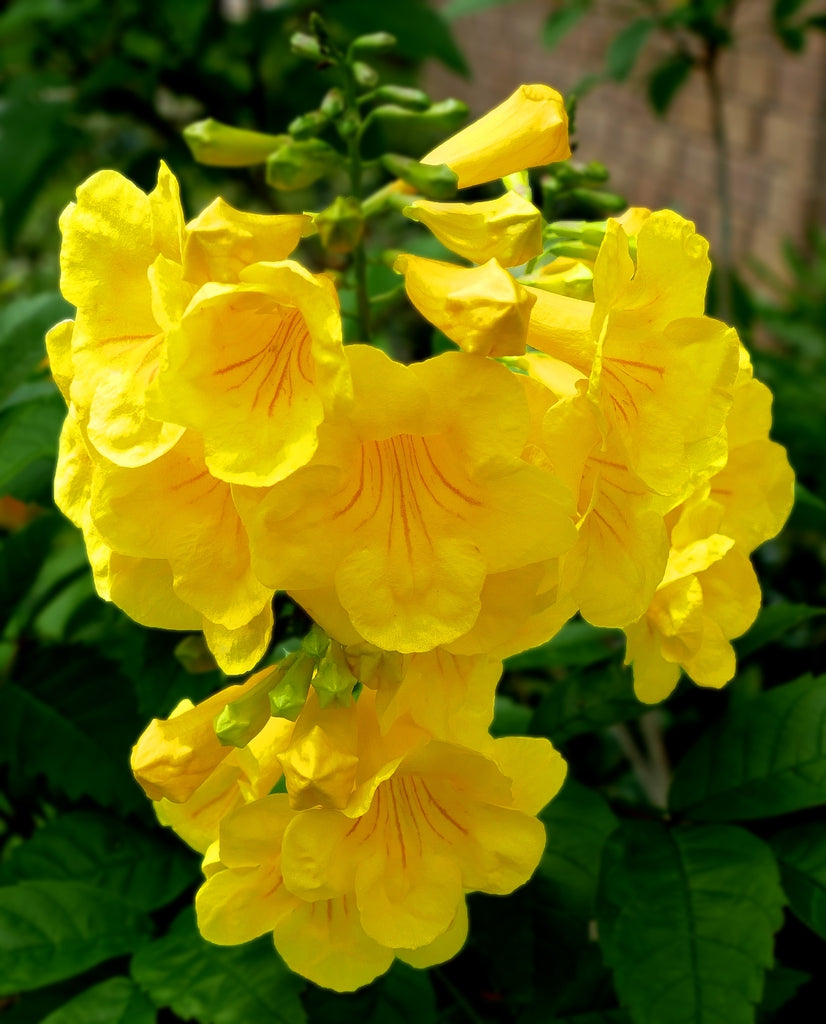Esperanza or Yellow bells is an irregularly shaped, deciduous shrub, normally 3-6 ft. tall in the US, but more southerly varieties can reach 9 ft. It has several stems and slender, erect branches. Clusters of large, trumpet-shaped, yellow flowers are very showy against the lance-shaped, olive-green leaves. Long, thin pods are conspicuous in autumn. It has an enormous natural range, extending from south Texas west to Arizona and south through Mexico and Central America to South America as far as northern Argentina, as well as in southern Florida south through much of the Caribbean. Plants native to the southwestern US and adjacent Mexico are Tecoma stans var. angustata, which is shorter, more drought-tolerant, and more
cold-tolerant than some of the tropical varieties sold in nurseries.
Anyone who has seen this plant in bloom can understand why one of its names is Yellow bells, as it produces great, attention-grabbing yellow blossoms. It has become a popular landscaping plant, valued as much for its drought tolerance as for its spectacular appearance.
North American native varieties of this species can survive winters within their natural range but may die to the ground during especially harsh winters even there. Varieties sold in nurseries may be from tropical stock and not do so well in the US cold. Yellow bells are drought tolerant, and Southwestern varieties are adapted to monsoon rains with dry spells between. They may flower better if such conditions are emulated in planned landscapes, so allow the ground to dry out between waterings. It is tolerant of confinement if containers are at least 12 inches in diameter and thus makes a good potted specimen.







































